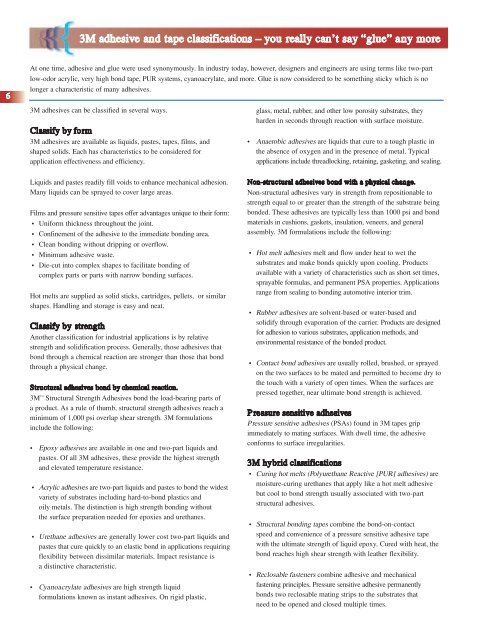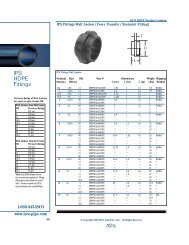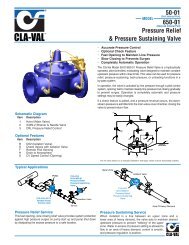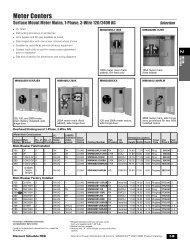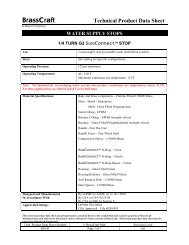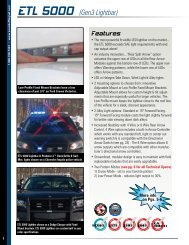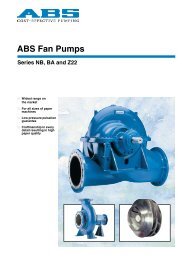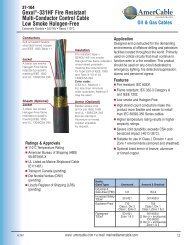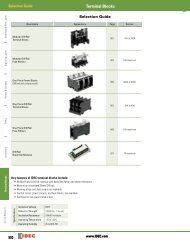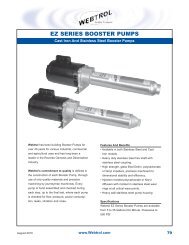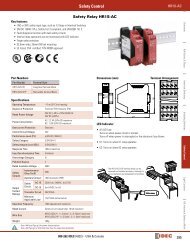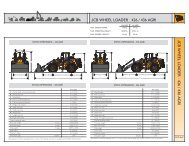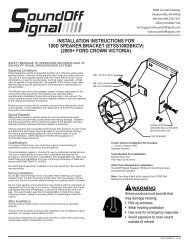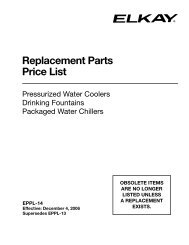Adhesives and Tapes
Adhesives and Tapes
Adhesives and Tapes
Create successful ePaper yourself
Turn your PDF publications into a flip-book with our unique Google optimized e-Paper software.
6<br />
6<br />
3M adhesive <strong>and</strong> tape classifications – you really can’t say “glue” any more<br />
At one time, adhesive <strong>and</strong> glue were used synonymously. In industry today, however, designers <strong>and</strong> engineers are using terms like two-part<br />
low-odor acrylic, very high bond tape, PUR systems, cyanoacrylate, <strong>and</strong> more. Glue is now considered to be something sticky which is no<br />
longer a characteristic of many adhesives.<br />
3M adhesives can be classified in several ways.<br />
Classify by form<br />
3M adhesives are available as liquids, pastes, tapes, films, <strong>and</strong><br />
shaped solids. Each has characteristics to be considered for<br />
application effectiveness <strong>and</strong> efficiency.<br />
Liquids <strong>and</strong> pastes readily fill voids to enhance mechanical adhesion.<br />
Many liquids can be sprayed to cover large areas.<br />
Films <strong>and</strong> pressure sensitive tapes offer advantages unique to their form:<br />
• Uniform thickness throughout the joint.<br />
• Confinement of the adhesive to the immediate bonding area.<br />
• Clean bonding without dripping or overflow.<br />
• Minimum adhesive waste.<br />
• Die-cut into complex shapes to facilitate bonding of<br />
complex parts or parts with narrow bonding surfaces.<br />
Hot melts are supplied as solid sticks, cartridges, pellets, or similar<br />
shapes. H<strong>and</strong>ling <strong>and</strong> storage is easy <strong>and</strong> neat.<br />
Classify by strength<br />
Another classification for industrial applications is by relative<br />
strength <strong>and</strong> solidification process. Generally, those adhesives that<br />
bond through a chemical reaction are stronger than those that bond<br />
through a physical change.<br />
Structural adhesives bond by chemical reaction.<br />
3M Structural Strength <strong>Adhesives</strong> bond the load-bearing parts of<br />
a product. As a rule of thumb, structural strength adhesives reach a<br />
minimum of 1,000 psi overlap shear strength. 3M formulations<br />
include the following:<br />
• Epoxy adhesives are available in one <strong>and</strong> two-part liquids <strong>and</strong><br />
pastes. Of all 3M adhesives, these provide the highest strength<br />
<strong>and</strong> elevated temperature resistance.<br />
• Acrylic adhesives are two-part liquids <strong>and</strong> pastes to bond the widest<br />
variety of substrates including hard-to-bond plastics <strong>and</strong><br />
oily metals. The distinction is high strength bonding without<br />
the surface preparation needed for epoxies <strong>and</strong> urethanes.<br />
• Urethane adhesives are generally lower cost two-part liquids <strong>and</strong><br />
pastes that cure quickly to an elastic bond in applications requiring<br />
flexibility between dissimilar materials. Impact resistance is<br />
a distinctive characteristic.<br />
• Cyanoacrylate adhesives are high strength liquid<br />
formulations known as instant adhesives. On rigid plastic,<br />
glass, metal, rubber, <strong>and</strong> other low porosity substrates, they<br />
harden in seconds through reaction with surface moisture.<br />
• Anaerobic adhesives are liquids that cure to a tough plastic in<br />
the absence of oxygen <strong>and</strong> in the presence of metal. Typical<br />
applications include threadlocking, retaining, gasketing, <strong>and</strong> sealing.<br />
Non-structural adhesives bond with a physical change.<br />
Non-structural adhesives vary in strength from repositionable to<br />
strength equal to or greater than the strength of the substrate being<br />
bonded. These adhesives are typically less than 1000 psi <strong>and</strong> bond<br />
materials in cushions, gaskets, insulation, veneers, <strong>and</strong> general<br />
assembly. 3M formulations include the following:<br />
• Hot melt adhesives melt <strong>and</strong> flow under heat to wet the<br />
substrates <strong>and</strong> make bonds quickly upon cooling. Products<br />
available with a variety of characteristics such as short set times,<br />
sprayable formulas, <strong>and</strong> permanent PSA properties. Applications<br />
range from sealing to bonding automotive interior trim.<br />
• Rubber adhesives are solvent-based or water-based <strong>and</strong><br />
solidify through evaporation of the carrier. Products are designed<br />
for adhesion to various substrates, application methods, <strong>and</strong><br />
environmental resistance of the bonded product.<br />
• Contact bond adhesives are usually rolled, brushed, or sprayed<br />
on the two surfaces to be mated <strong>and</strong> permitted to become dry to<br />
the touch with a variety of open times. When the surfaces are<br />
pressed together, near ultimate bond strength is achieved.<br />
P ressure sensitive adhesives<br />
Pressure sensitive adhesives (PSAs) found in 3M tapes grip<br />
immediately to mating surfaces. With dwell time, the adhesive<br />
conforms to surface irregularities.<br />
3M hybrid classifications<br />
• Curing hot melts (Polyurethane Reactive [PUR] adhesives) are<br />
moisture-curing urethanes that apply like a hot melt adhesive<br />
but cool to bond strength usually associated with two-part<br />
structural adhesives.<br />
• Structural bonding tapes combine the bond-on-contact<br />
speed <strong>and</strong> convenience of a pressure sensitive adhesive tape<br />
with the ultimate strength of liquid epoxy. Cured with heat, the<br />
bond reaches high shear strength with leather flexibility.<br />
• Reclosable fasteners combine adhesive <strong>and</strong> mechanical<br />
fastening principles. Pressure sensitive adhesive permanently<br />
bonds two reclosable mating strips to the substrates that<br />
need to be opened <strong>and</strong> closed multiple times.


